Selecting the right crochet hook size is a pivotal decision that can significantly impact the outcome of your crochet projects.
Whether you’re a seasoned crocheter or a novice, understanding how to choose the appropriate hook size is essential for achieving your creations’ desired tension, gauge, and overall aesthetic.
This guide explores the key factors influencing your choice, such as yarn weight, pattern instructions, personal tension, and project type.
By navigating through these considerations, you’ll gain the confidence to make informed decisions about crochet hook sizes, ensuring that your projects reflect precision, creativity, and a touch of your unique crafting style.
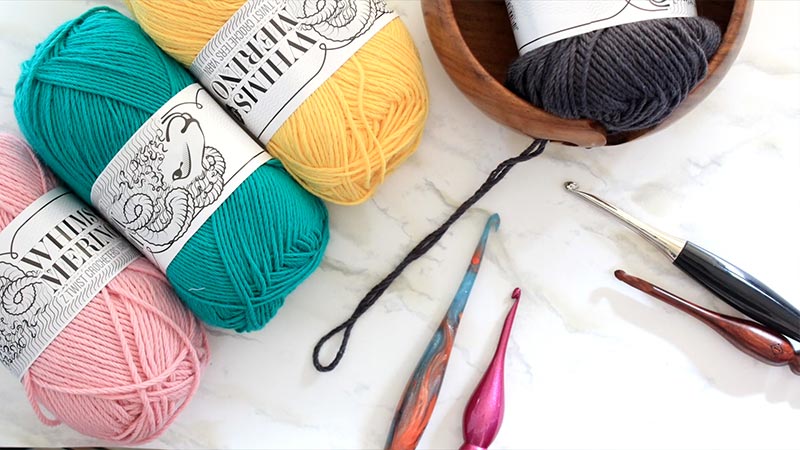
How Do You Know What Size Crochet Hook to Use? Step-By-Step Guide
Choosing the right crochet hook size is a critical step in ensuring the success and appearance of your crochet project.
Here’s a step-by-step guide on how to determine the appropriate crochet hook size:
Refer to Yarn Label
Check the yarn label for the manufacturer’s recommended hook size. Yarn labels typically suggest an ideal hook size based on the thickness and texture of the yarn. This provides a good starting point for your project.
Follow Pattern Instructions
If you are working from a crochet pattern, carefully read the instructions. Designers usually specify the recommended hook size for the correct gauge and dimensions. Following these instructions ensures that your finished project matches the designer’s intentions.
Consider Yarn Weight
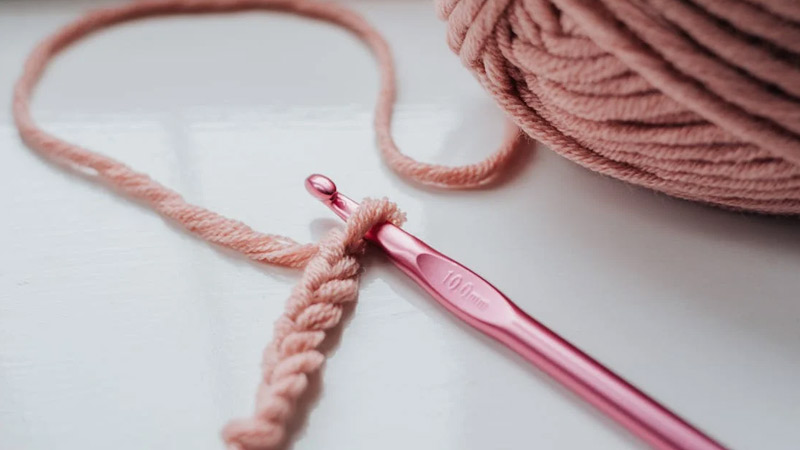
Match the yarn weight to the appropriate hook size. Thicker yarns, like worsted or bulky weights, generally require larger hooks, while thinner yarns, like fingering or lace weights, work well with smaller hooks.
Understand Your Tension
Be aware of your crocheting tension. If you crochet tightly, you may need to use a larger hook; a smaller hook may be necessary if you crochet loosely. Adjusting for your tension helps maintain uniformity in stitch size.
Create a Gauge Swatch
Before starting your project, create a gauge swatch using the chosen yarn and hook. Follow the pattern’s gauge instructions and measure your swatch.
If the gauge does not match the pattern’s specifications, adjust the hook size and try again until you achieve the correct tension.
Explore Wraps Per Inch (WPI)
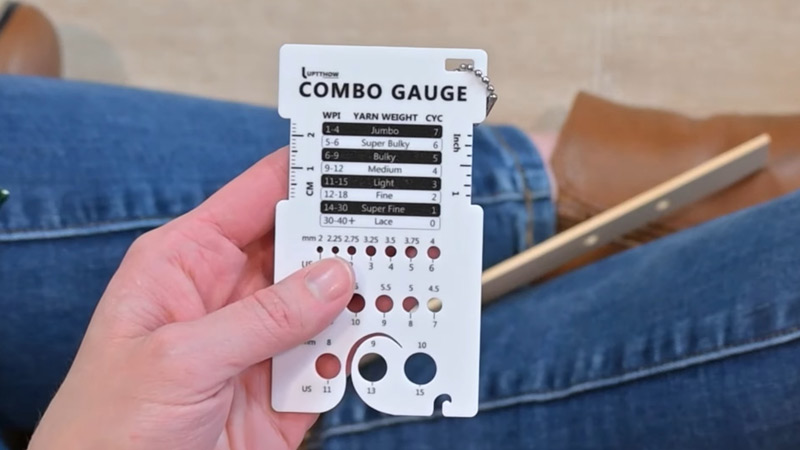
Measure your yarn’s wraps per inch (WPI) by wrapping it around a ruler. Consult a WPI chart to determine the corresponding hook size. This method is beneficial if the yarn label information is not available.
Consider the Project Type
Different projects may benefit from specific hook sizes. Amigurumi projects often require a smaller hook for tight stitches, while larger hooks may be suitable for lacy shawls or blankets.
Experiment with Samples
If unsure, create small samples with different hook sizes to see how the stitches and fabric vary. This hands-on approach allows you to visually and tactically assess the impact of different hook sizes.
Consult Crochet Community
Seek advice from experienced crocheters in online forums or local yarn stores. They may offer valuable insights and recommendations based on their experiences with specific yarns and projects.
Trust Your Instincts
As you gain experience, you’ll understand what works best for your crocheting style and preferences. Trust your instincts and adjust your hook size based on your unique needs and the specific requirements of your project.
Why Is Choosing the Right Crochet Hook Size Important for a Project?
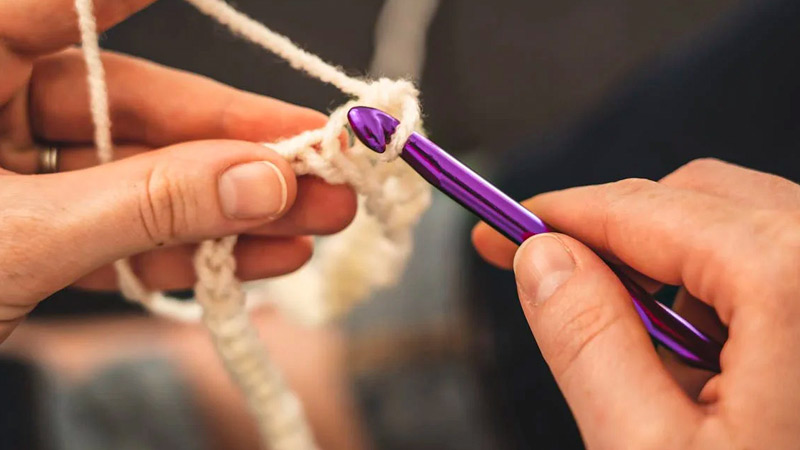
Choosing the right crochet hook size is a fundamental aspect of successful crocheting, and it plays a crucial role in the outcome of your projects.
Here are several reasons why selecting the appropriate crochet hook size is important:
Gauge Accuracy
The recommended crochet hook size in a pattern is specifically chosen to achieve the correct gauge. Gauge refers to the number of stitches and rows per inch.
Using the correct hook size ensures that your stitches align with the pattern’s gauge, resulting in a finished piece with the intended size and proportions.
Consistent Tension
Crocheters vary in tension levels, meaning some may naturally crochet tightly while others crochet more loosely. Selecting the appropriate hook size helps control tension, promoting uniformity in stitch size throughout the project.
Consistent tension is crucial for a polished and aesthetically pleasing final product.
Texture and Drape
The size of the crochet hook directly influences the texture and drape of the finished fabric. Opting for a larger hook creates looser stitches, creating an open and airy texture.
Conversely, a smaller hook yields tighter stitches, producing a more structured and dense fabric. Choosing the right hook size ensures the project attains the desired texture and drape.
Yarn Compatibility
Different yarn weights are designed to work optimally with specific hook sizes. Matching the appropriate hook size to the yarn weight ensures proper stitch formation and enhances stitch definition. This compatibility contributes to the overall appearance and quality of the project.
Preservation of Pattern Design
Designers carefully select a particular hook size for their patterns to achieve specific design elements. Deviating significantly from the recommended hook size may alter the pattern’s appearance, fit, and integrity.
Following the pattern instructions helps preserve the designer’s vision and ensures a successful outcome.
Comfort and Ergonomics
Using the correct hook size contributes to the comfort of the crocheter. An appropriately sized hook minimizes hand fatigue, allows for a more natural hand movement, and reduces the risk of strain or discomfort during extended crochet sessions.
Efficient Yarn Usage
Choosing the right hook size promotes efficient yarn consumption. Proper tension and stitch size helps prevent yarn wastage, ensuring you have sufficient yarn to complete the project without excess leftovers.
Adaptability to Project Requirements
Different types of projects may necessitate specific hook sizes based on their characteristics. For example, amigurumi projects often require a smaller hook for tight stitches, while larger hooks may be suitable for lacy or openwork designs.
What Are the Most Popular Crochet Hook Sizes for Beginners?
For beginners, it’s often recommended to start with a set of crochet hooks that cover a range of sizes, allowing for versatility in tackling different projects.
Here are some popular crochet hook sizes for beginners:
5.5 mm (I-9)
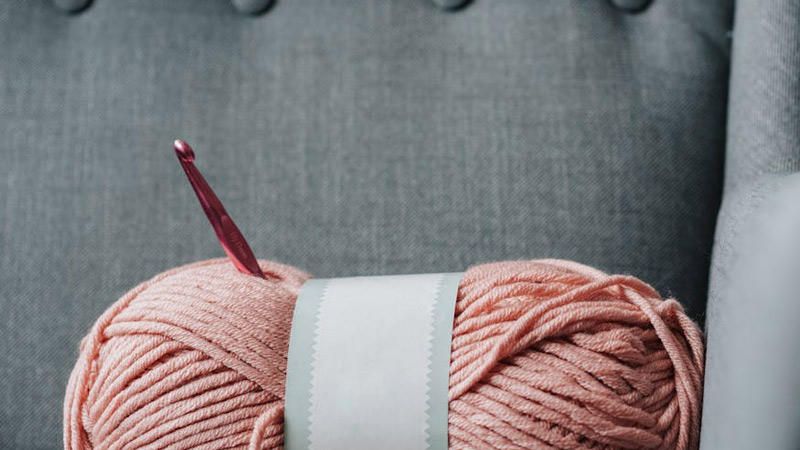
This size is versatile and commonly used for medium-weight yarns. It suits various projects, including scarves, hats, and blankets.
6.0 mm (J-10)
A slightly larger hook, suitable for medium to bulky yarns. It works well for projects requiring more drape and flexibility, like shawls and afghans.
4.0 mm (G-6)
A smaller hook is ideal for light to medium-weight yarns. Great for practicing and creating items with more intricate stitch patterns.
5.0 mm (H-8)
A mid-range hook size that’s versatile for various yarn weights. It’s commonly used for multiple projects, making it a staple in many crochet toolkits.
6.5 mm (K-10.5)
Slightly more significant than the J-10, this hook size suits bulkier yarns. It’s great for projects with a more open and airy stitch pattern.
3.5 mm (E-4)
A smaller hook size, perfect for fine or lightweight yarns. This site is excellent for precision projects like amigurumi or delicate accessories.
5.25 mm (K-10.5)
Falling between the K and L sizes, this hook provides a middle ground and can be used for various yarn weights.
6.5 mm (L-11)
A larger hook is suitable for bulky or super bulky yarns. It’s excellent for projects that want a quick finish, such as chunky scarves or blankets.
FAQs
Does the material of the crochet hook matter when choosing the size?
Yes, the material can affect the weight and feel of the hook. Metal hooks may be heavier, while plastic or bamboo hooks are lighter. Experiment with different materials to find what suits your comfort and project requirements.
How does the shape of the crochet hook impact the choice of size?
The shape of the hook, whether inline, tapered, or ergonomic, can influence how stitches are formed. Choosing a hook shape that aligns with your crocheting style can enhance your overall experience.
What role does climate or weather play in choosing a crochet hook size?
Humidity and temperature can impact yarn elasticity. You may need a smaller hook to maintain tension in humid conditions, while a larger hook in drier conditions may prevent stiffness.
Are there standard hook sizes across different countries or regions?
Hook sizes may vary between countries or regions. Familiarize yourself with standard sizing conventions to ensure consistency when using patterns or interacting with the global crochet community.
What are some common mistakes to avoid when choosing a crochet hook size?
Avoid choosing the wrong size by neglecting pattern recommendations, overlooking personal tension, ignoring yarn weight, and disregarding the importance of creating gauge swatches.
To Recap
Mastering the art of choosing the right crochet hook size is a journey that blends creativity and precision. This guide has empowered you to navigate the intricacies of yarn weight, personal tension, and project requirements, ensuring that each stitch aligns with your vision.
By embracing experimentation, consulting the crochet community, and understanding the nuanced factors involved, you’ve equipped yourself with the skills to select the perfect hook size for any project.
As you embark on your crochet endeavors, may this knowledge enhance your crafting experience, allowing your creations to flourish with the beauty, texture, and dimension that come from a well-chosen crochet hook. Happy crocheting!
Leave a Reply